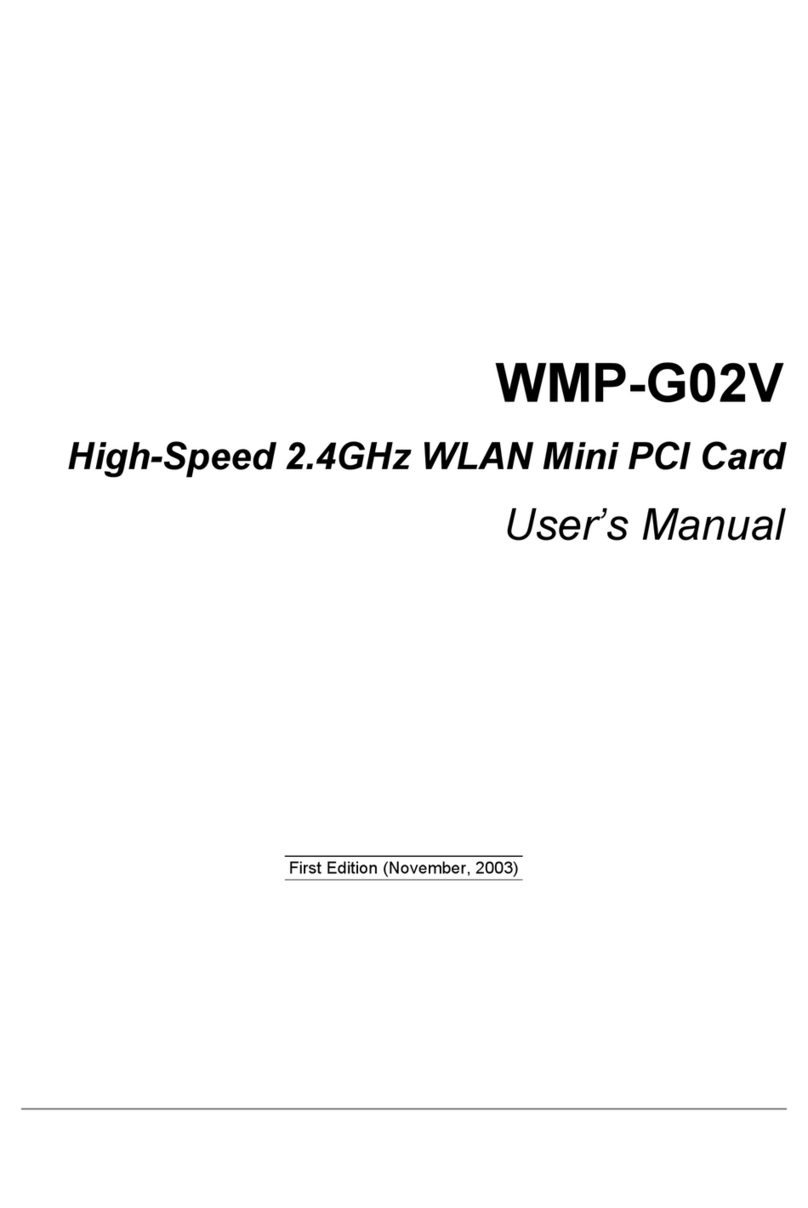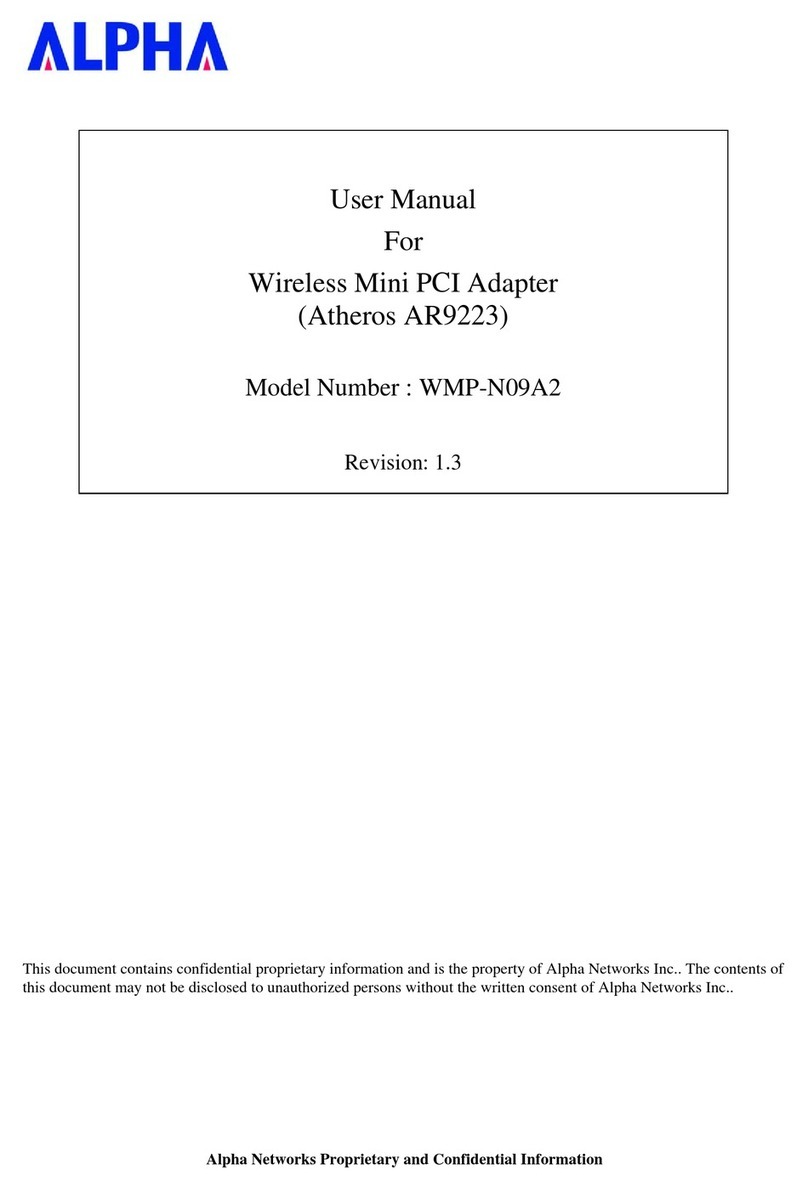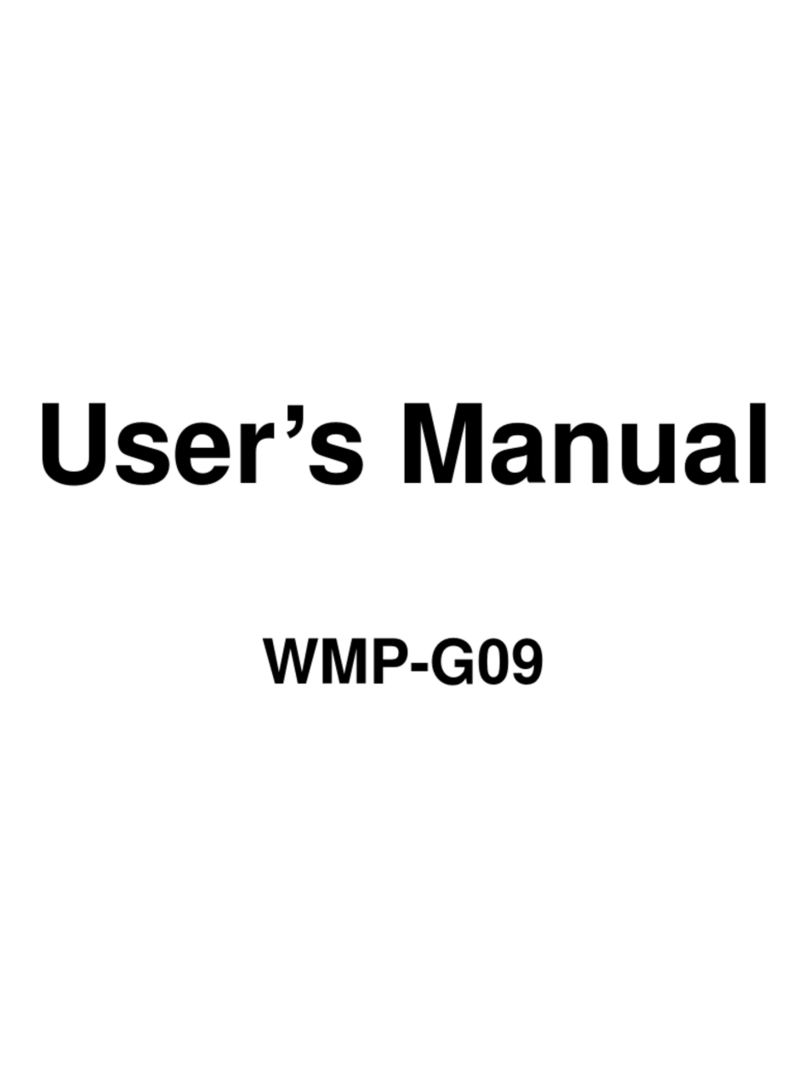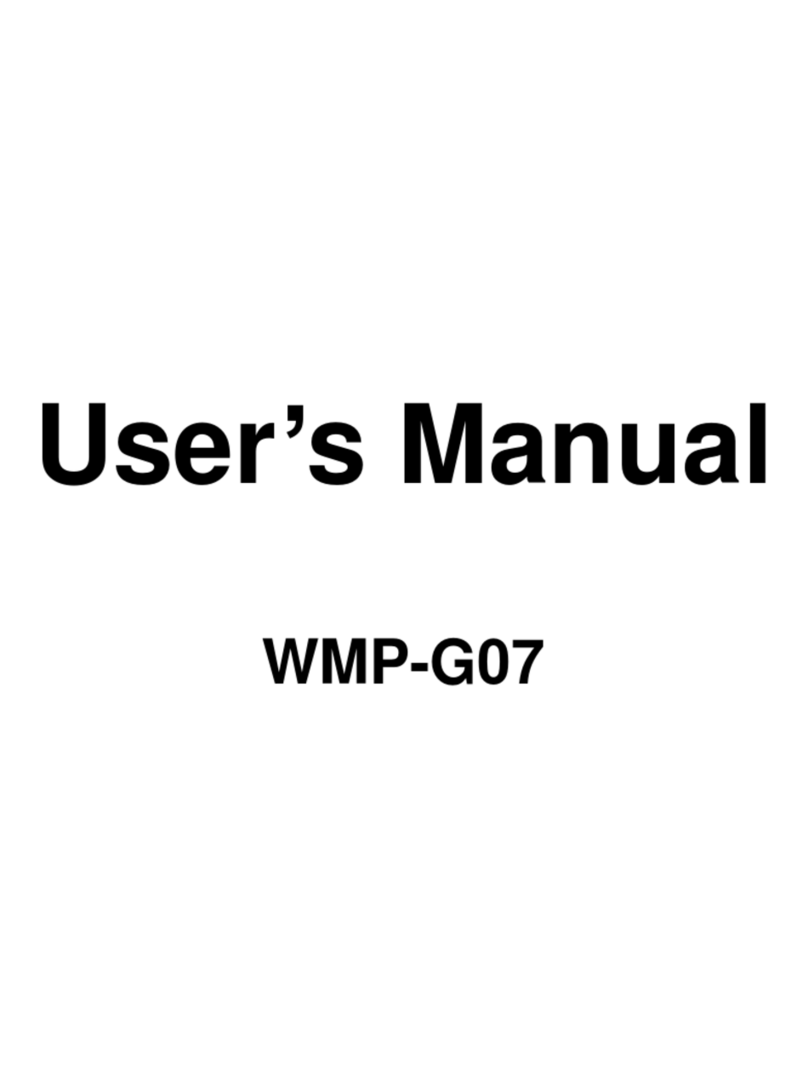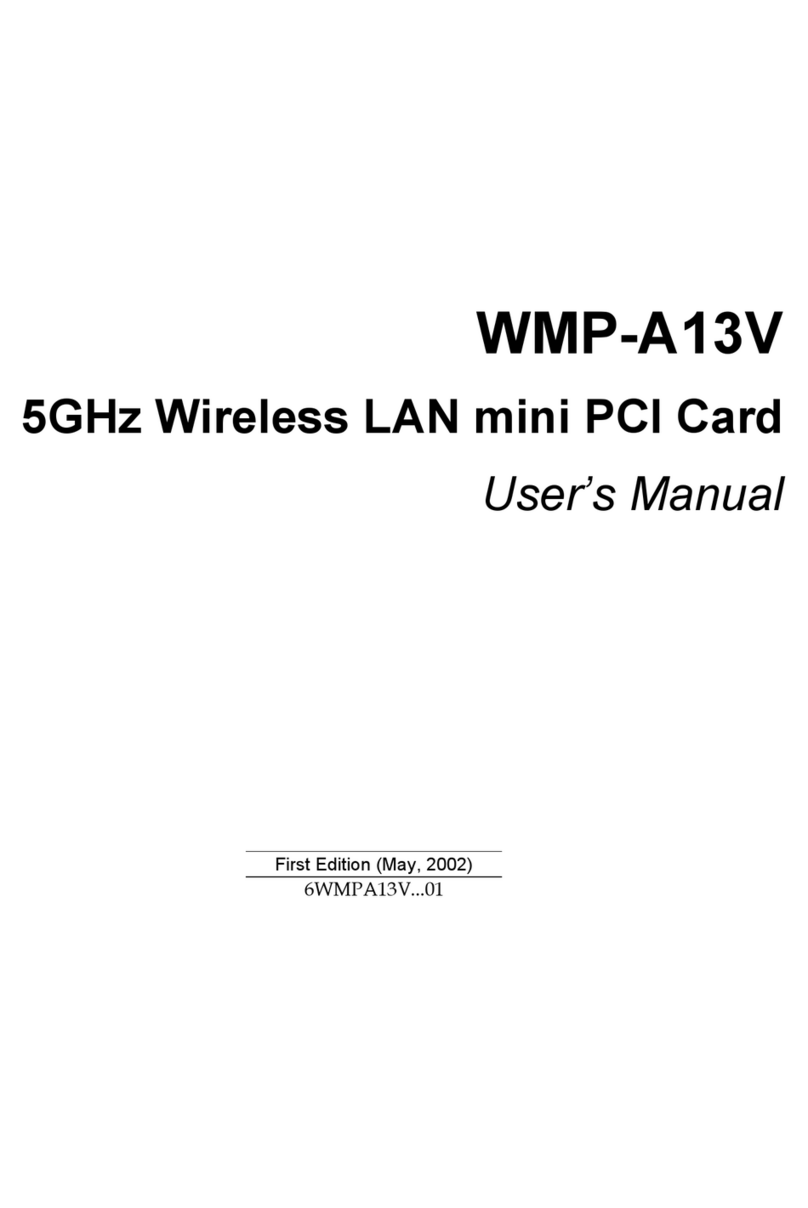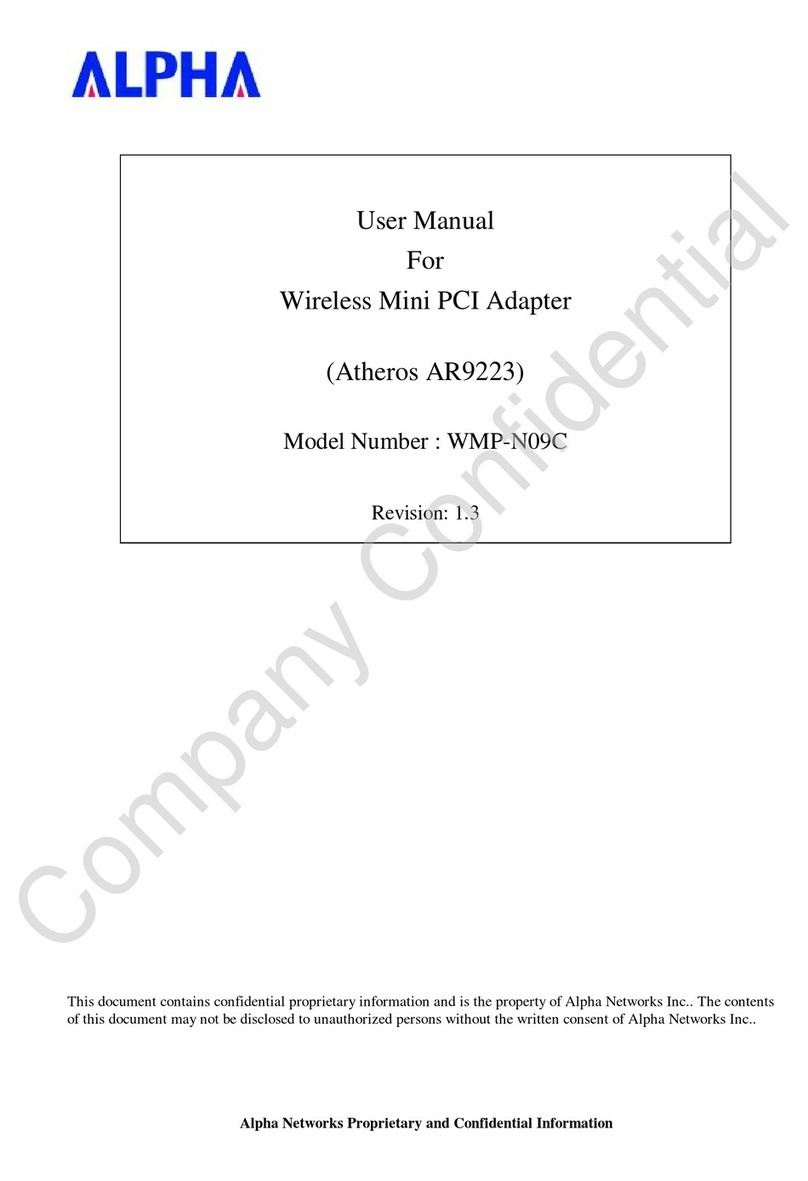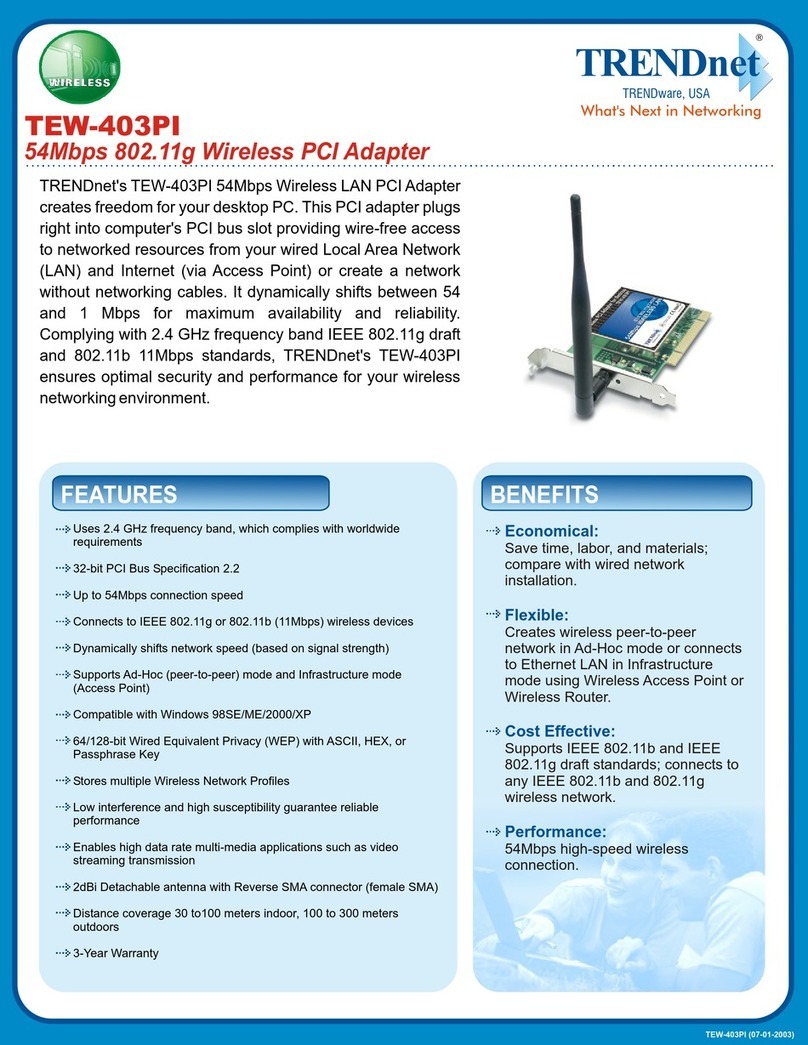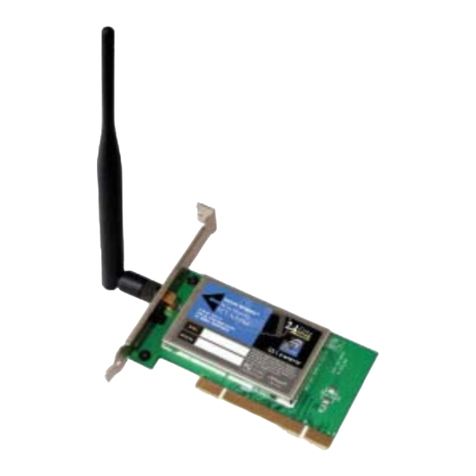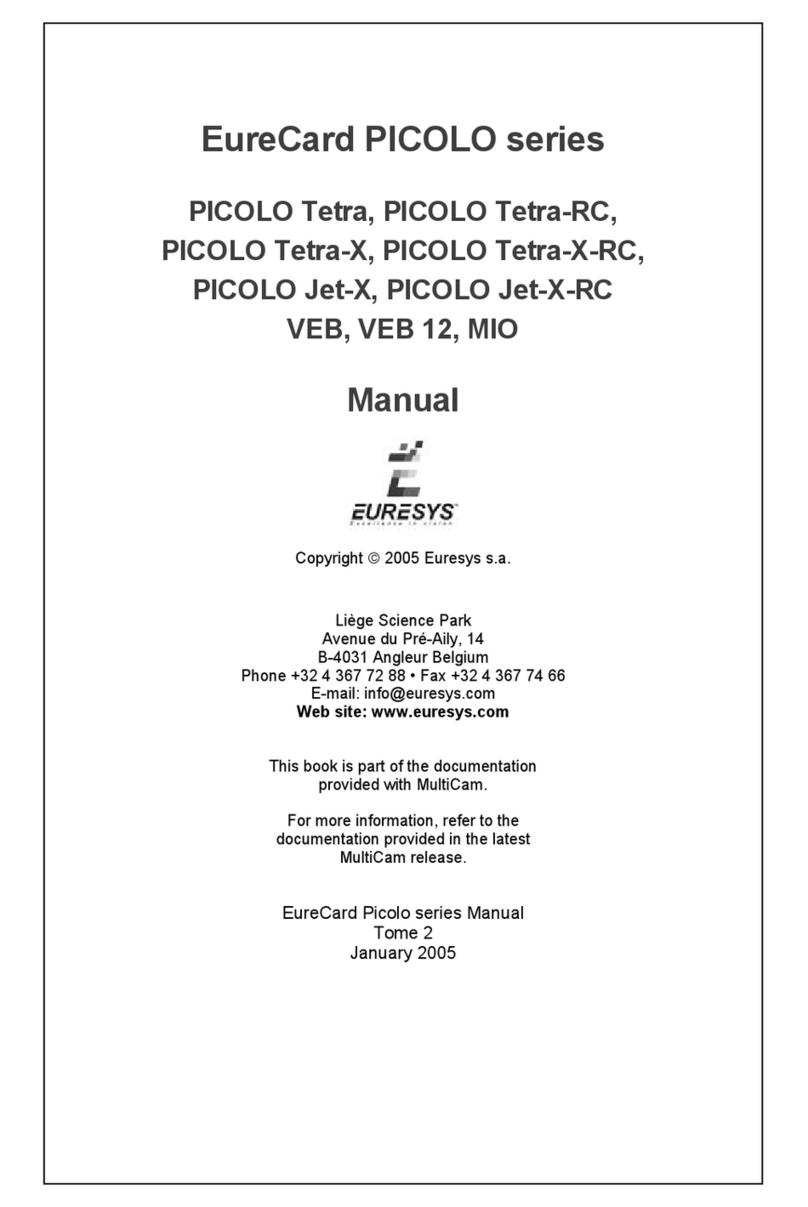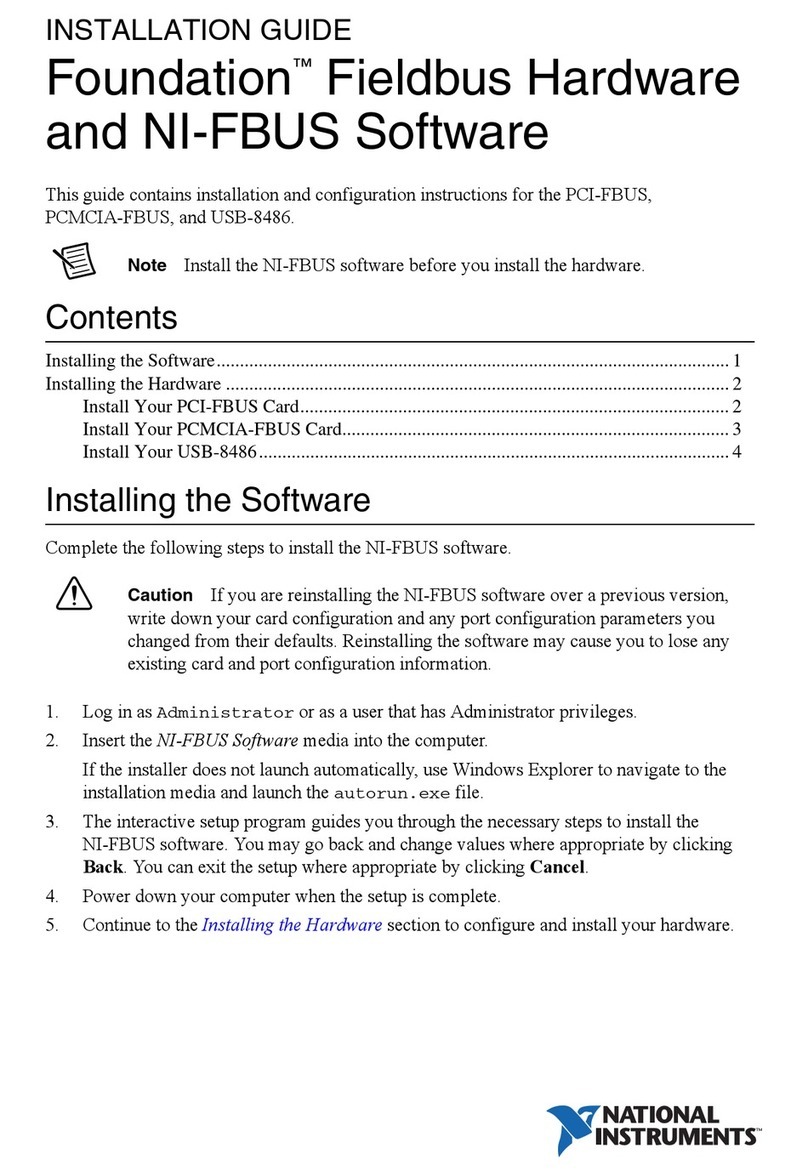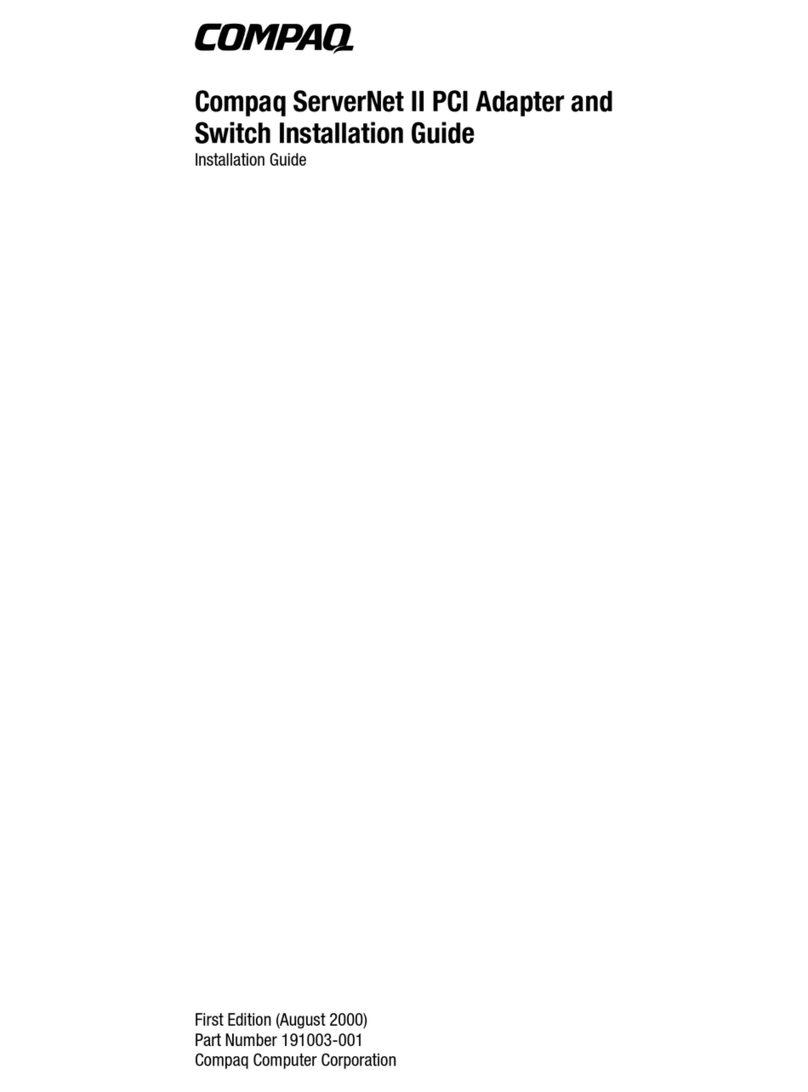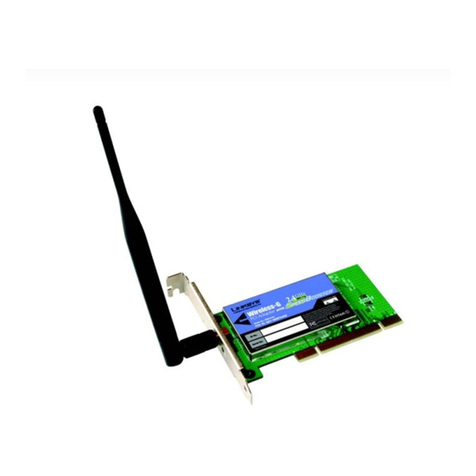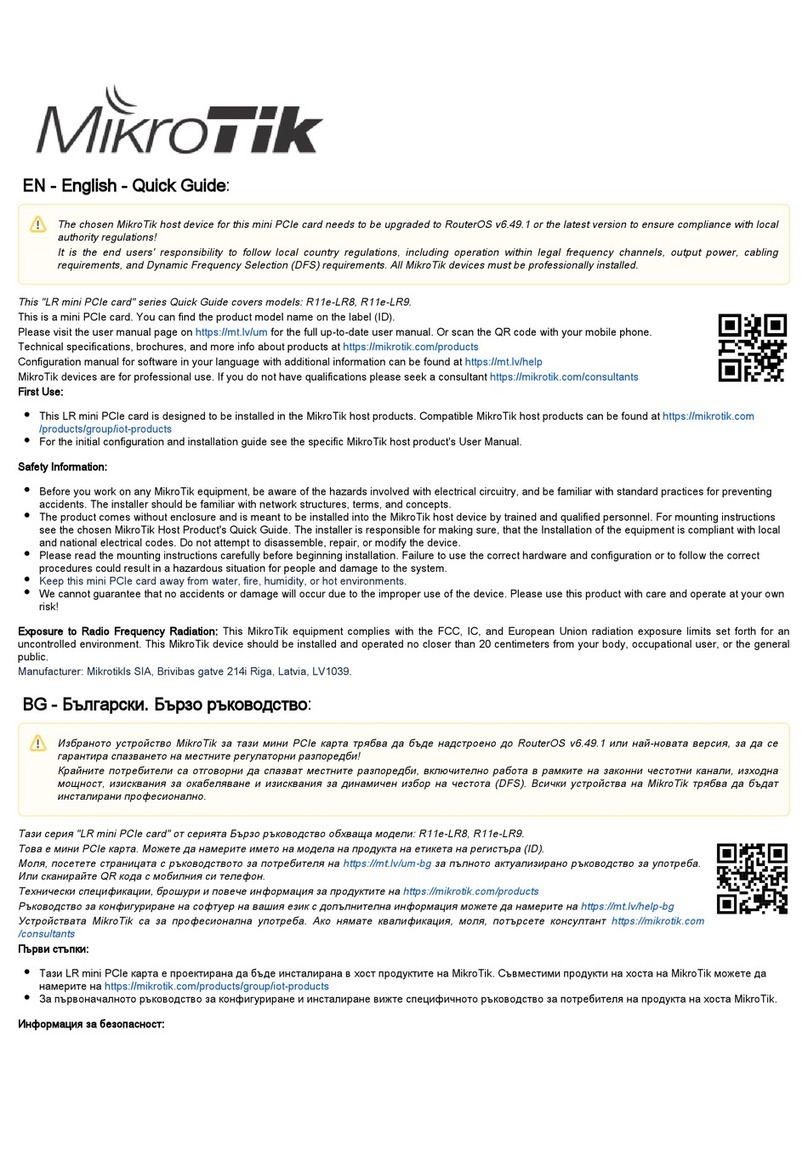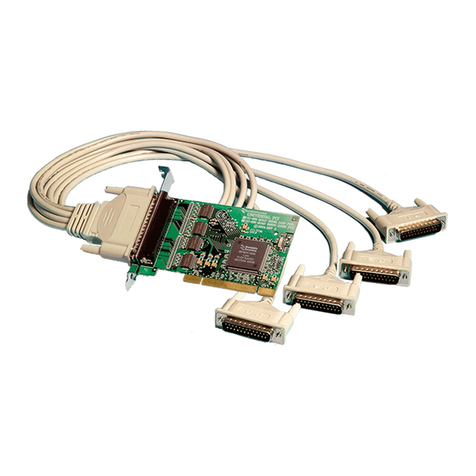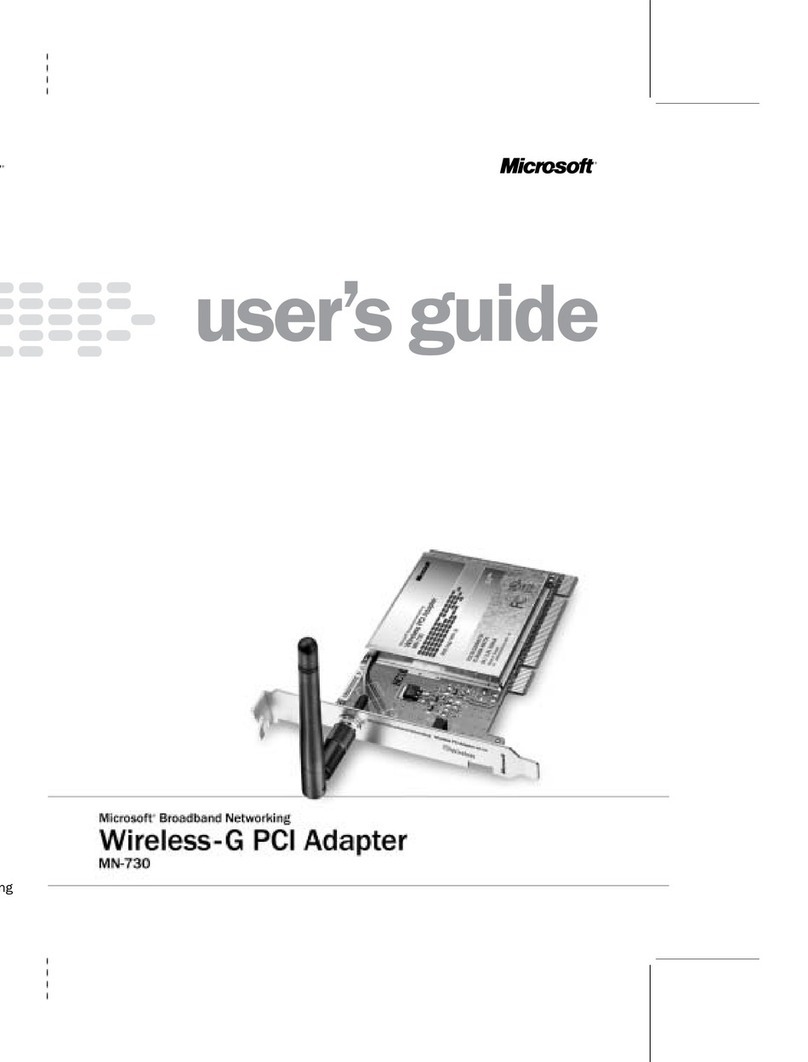Alpha Networks WMP-G15 User manual

User’s Manual
Model Number: WMP-G15
Model name: 802.11b/g WLAN Mini PCI Card

1.0 Scope
1.1Document
This document is to specify the product requirements for 802.11 g/b MiniPCI Card. This Card is
based on Atheros
chipset that complied with IEEE 802.11g and IEEE 802.11b standard from 2.4~2.5GHz, and it can
be used to provide
up to 54Mbps for IEEE 802.11g, or 11Mbps for IEEE 802.11b to connect your wireless LAN.
With seamless roaming, fully interoperability and advanced security with WEP standard, 802.11 g/b
MiniPCI Card
offers absolute interoperability with different vendors’ 802.11g and 802.11b Access Points through
the wireless LAN.
1.2 Product Features
_ Compatible with IEEE 802.11g high rate standard to provide wireless 54Mbps data rate
_ Compatible with IEEE 802.11b high rate standard to provide wireless 11Mbps data rate
_ Operation at 2.4 ~ 2.5GHz frequency band to meet worldwide regulations
_ Dynamic date rate scaling at 6, 9, 12, 18, 24, 36, 48, 54Mbps for IEEE 802.11g
_ Dynamic date rate scaling at 1, 2, 5.5, and 11Mbps for IEEE 802.11b
_ Maximum reliability, throughput and connectivity with automatic data rate switching
_ Supports wireless data encryption with 64/128-bit WEP for security
_ Supports infrastructure networks via Access Point and ad-hoc network via peer-to-peer
communication
_ ual UFL antenna connectors for diversity
_ Supports WPA enhanced security
_ Friendly user configuration and utilities
_ Drivers support Windows 98SE, ME, 2K, XP and Vista
2.0 Requirements
The following sections identify the detailed requirements of the 802.11g Mini-PCI Card.

2.2 General Requirements
2.2.1 IEEE 802.11b Section
2.2.2.1 Standard _ IEEE 802.11b
2.2.2.2 Radio and Modulation Schemes_ DQPSK, DBPSK, DSSS, and CCK
2.2.2.3 Operating Frequency_ 2400 ~ 2483.5MHz ISM band
2.2.2.4 Channel Numbers_ 11 channels for United States
_13 channels for Europe Countries
_14 channels for Japan
2.2.2.5 Data Rate _ 11, 5.5, 2, and 1Mbps
2.2.2.6 Media Access Protocol_ CSMA/CA with ACK
2.2.2.7 Transmitter Output Power at antenna connector
_ Typical RF Output Power at each Data Rate and at room Temp. 25degree C
_ 18 dBm at 1, 2, 5.5, 11Mbps (AVG Power)
2.2.2.8 Receiver Sensitivity at antenna connector
_ Typical Sensitivity at Which Frame (1000-byte PDUs)Error Rate = 8% at room Temp. 25degree C
_ Typical -83dBm for 11Mbps @ 8% PER
_ Typical -86dBm for 5.5Mbps @ 8% PER
_ Typical -88dBm for 2Mbps @ 8% PER
2.2.2 IEEE 802.11g Section
Standard _ IEEE 802.11g
2.2.1.2 Radio and Modulation Type
_ BPSK, QPSK, 16QAM, 64QAM, OFDM
2.2.1.3 Operating Frequency
_ 2400 ~ 2483.5MHz ISM band
2.2.1.4 Channel Numbers
_ 11 channels for United States
_13 channels for Europe Countries
_13 channels for Japan
2.2.1.5 Data Rate _ 6, 9, 12, 18, 24, 36, 48, 54Mbps
2.2.1.6 Media Access Protocol_ CSMA/CA with ACK
2.2.1.7 Transmitter Output Power at antenna connector
_ Typical RF Output Power at each Data Rate and at room (AVG Power)
Temp. 25degree C
_ 18dBm at 6, 9, 12, 18, 24Mbps Mbps
_ 17dBm at 36Mbps
_ 16dBm at 48Mbps

_ 15dBm at 54Mbps
2.2.1.8 Receiver Sensitivity at Antenna Connector
_ Typical Sensitivity at Which Frame (1000-byte PDUs)Error Rate = 10% at room Temp. 25degree
C
_ –87dBm at 6Mbps
_ –86dBm at 9Mbps
_ –85dBm at 12Mbps
_ –82dBm at 18Mbps
_ –79dBm at 24Mbps
_ –75dBm at 36Mbps
_ –71dBm at 48Mbps
_ –69dBm at 54Mbps
2.2.3.1 Antenna Type _ I-Pex compatible connector
2.2.3.2 Operating Voltage _ 3.3VDC +/- 5%
2.2.3.3 CurrentConsumption
_ 550 mA at transmit mode
_ 200 mA at standby mode
2.2.3.4 Form Factor and Interface_ Mini-PCI type III B form factor; almost half size
2.2.3.5 LEDs _ External LED functional supported
2.3 Software Requirements
The Configuration Software supports Microsoft Windows 98SE, ME, 2000, XP and Vista. This
configuration
software includes the following functions:
_ Information
Information allows you to monitor network status.
_ Configuration
Configuration allows you to configure parameters for wireless networking.
_ Security
Supports enhanced security WEP, 802.1x,WPA and WPA22.3.1 Information
# Feature Detailed Description
2.3.1.1 General
Information
General Information shows the name of Wireless
Adapter, Adapter MAC Address, Regulatory Domain,
Firmware Version, and Utility Version.
2.3.1.2 Current Link
Information
Current Link Information shows the Current Setting
ESSID, Channel Number, Associated BSSID, Network
Type (infrastructure or Ad-hoc network), WEP Status

# Feature Detailed Description
(enable or disable), Link Status (Connect or Disconnect),
802.11g Transmit Speed (6, 9, 12, 18, 24, 36,
48, 54Mbps), 802.11b Transmit Speed (1, 2, 5.5,
11Mbps), Signal Strength, and Link Quality.
2.3.1.3 Site survey To search the neighboring access points and display the
information of all access points..
2.3.2 Configuration
# Feature Detailed Description
2.3.2.1 ESS ID yInput an SSID number if the roaming
feature is enabled
ySupports for ASCII printable characters.
2.3.2.2 Network Type
yAd-hoc Mode and 802.11 Ad-hoc Mode for
network configurations that do not have
any access points
yInfrastructure Mode for network
configurations with access points
2.3.2.3 Power Save yExtend the battery life of clients by allowing
the client to sleep for short periods of time
while the Access Point buffers the
messages.
2.3.2.4 RTS Threshold ySet the number of bytes used for
fragmentation boundary for messages
2.3.2.5 Fragment
Threshold
ySet the number of bytes used for RTS/CTS
boundary
2.3.2.6 Transmission
Speed
yThis indicates the communication rates.
Select appropriate transmission speed to
match your wireless LAN settings
2.3.2.7 Roaming ySupport Automatic or Manual Rescan to
associate with access point.
2.3.3 Security
# Feature Detailed Description
2.3.3.1 Encryption yRC4 encryption algorithm
ySupport 64-bit and 128-bit WEP encryption
ySupport open system and shared key

# Feature Detailed Description
authentication
2.3.3.2 WEP
Management
yFour WEP keys can be selected
ySTA with WEP off will never associate any
AP with WEP enabled
yWEP Key Format: Option for Hex format
2.3.3.4 WPA&WPA2 ySupport WPA/WPA2-PSK and
WPA/WPA2-EAP
ySupport Cipher Mode AES and TKIP
2.4 Mechanical Requirements
# Feature Detailed Description
2.4.1 Length y60mm
2.4.2 Width y30mm
2.4.3 Height y5mm
2.5 Compatibility Requirements
This device passes the following compatibility requirements.
# Feature Detailed Description
2.5.1 Wi-Fi yMeet Wi-Fi certification for IEEE 802.11b product
2.5.2 WHQL yMeet applicable WHQL certification requirements
2.5.3 Physical Layer
and
Functionality
yMeet ALPHA Engineering Test Plan and
Test Report
2.6 Requirements of Reliability, Maintainability and Quality
# Feature Detailed Description
2.6.1 MTBF yMean Time Between Failure > 30,000
hours
2.6.2 Maintainability yThere is no scheduled preventive
maintenance required
2.6.3 Quality yThe product quality is followed-up by
ALPHA factory quality control system

2.7 Environmental Requirements
# Feature Detailed Description
2.7.1 Operating
Temperature
Conditions
yThe product is capable of continuous
reliable operation when operating in
ambient temperature of 0 ℃to +55℃.
2.7.2 Non-Operating
Temperature
Conditions
yNeither subassemblies is damaged nor the
operational performance is degraded when
restored to the operating temperature after
exposing to storage temperature in the
range of –20 ℃to +75 ℃.
2.7.3 Operating
Humidity
conditions
yThe product is capable of continuous reliable
operation when subjected to relative humidity in the
range of 10% and 90% non-condensing.
2.7.4 Non-Operating
Humidity
Conditions
yThe product is not damaged nor the
performance is degraded after exposure to
relative humidity ranging from 5% to 95%
non-condensing

Federal Communication Commission Interference Statement
This equipment has been tested and found to comply with the limits for a Class B digital device,
pursuant to Part 15 of the FCC Rules. These limits are designed to provide reasonable
protection against harmful interference in a residential installation. This equipment generates,
uses and can radiate radio frequency energy and, if not installed and used in accordance with
the instructions, may cause harmful interference to radio communications. However, there is
no guarantee that interference will not occur in a particular installation. If this equipment does
cause harmful interference to radio or television reception, which can be determined by turning
the equipment off and on, the user is encouraged to try to correct the interference by one of the
following measures:
- Reorient or relocate the receiving antenna.
- Increase the separation between the equipment and receiver.
- Connect the equipment into an outlet on a circuit different from that
to which the receiver is connected.
- Consult the dealer or an experienced radio/TV technician for help.
This device complies with Part 15 of the FCC Rules. Operation is subject to the following two
conditions: (1) This device may not cause harmful interference, and (2) this device must
accept any interference received, including interference that may cause undesired operation.
FCC Caution: Any changes or modifications not expressly approved by the party responsible
for compliance could void the user's authority to operate this equipment.
IMPORTANT NOTE:
FCC Radiation Exposure Statement:
This equipment complies with FCC radiation exposure limits set forth for an uncontrolled
environment. This equipment should be installed and operated with minimum distance 20cm
between the radiator & your body.
This transmitter must not be co-located or operating in conjunction with any other antenna or
transmitter.
IEEE 802.11b or 802.11g operation of this product in the U.S.A. is firmware-limited to channels
1 through 11.

This device is intended only for OEM integrators under the following conditions:
The antenna must be installed such that 20 cm is maintained between the antenna and users,
and
The transmitter module may not be co-located with any other transmitter or antenna,
For all products market in US, OEM has to limit the operation channels in CH1 to CH11 for
2.4G band by supplied firmware programming tool. OEM shall not supply any tool or info to the
end-user regarding to Regulatory Domain change.
As long as 3 conditions above are met, further transmitter test will not be required. However,
the OEM integrator is still responsible for testing their end-product for any additional
compliance requirements required with this module installed (for example, digital device
emissions, PC peripheral requirements, etc.).
IMPORTANT NOTE: In the event that these conditions can not be met (for example certain
laptop configurations or co-location with another transmitter), then the FCC authorization is no
longer considered valid and the FCC ID can not be used on the final product. In these
circumstances, the OEM integrator will be responsible for re-evaluating the end product
(including the transmitter) and obtaining a separate FCC authorization.
End Product Labeling
This transmitter module is authorized only for use in device where the antenna may be
installed such that 20 cm may be maintained between the antenna and users. The final end
product must be labeled in a visible area with the following: “Contains FCC ID:
RRK-WMPG15”.
Manual Information To the End User
The OEM integrator has to be aware not to provide information to the end user regarding how
to install or remove this RF module in the user’s manual of the end product which integrates
this module.
The end user manual shall include all required regulatory information/warning as show in this
manual.
Table of contents
Other Alpha Networks PCI Card manuals
Popular PCI Card manuals by other brands
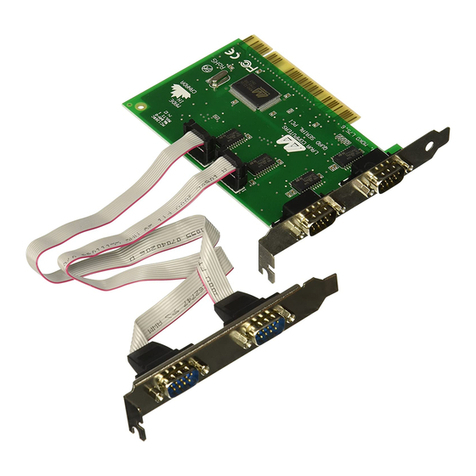
Lava
Lava QUATTRO-PCI installation manual
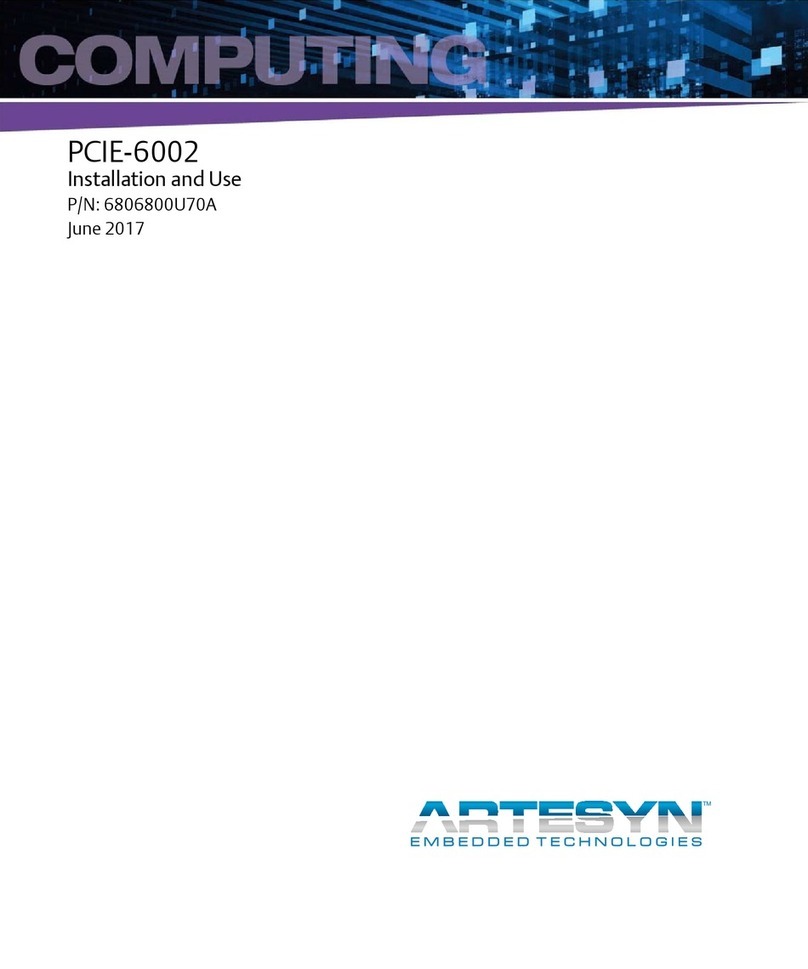
Artesyn
Artesyn PCIE-6002 Installation and use
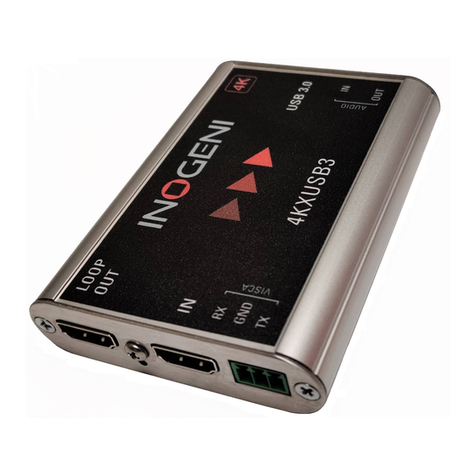
inogeni
inogeni 4KXUSB3 quick start guide
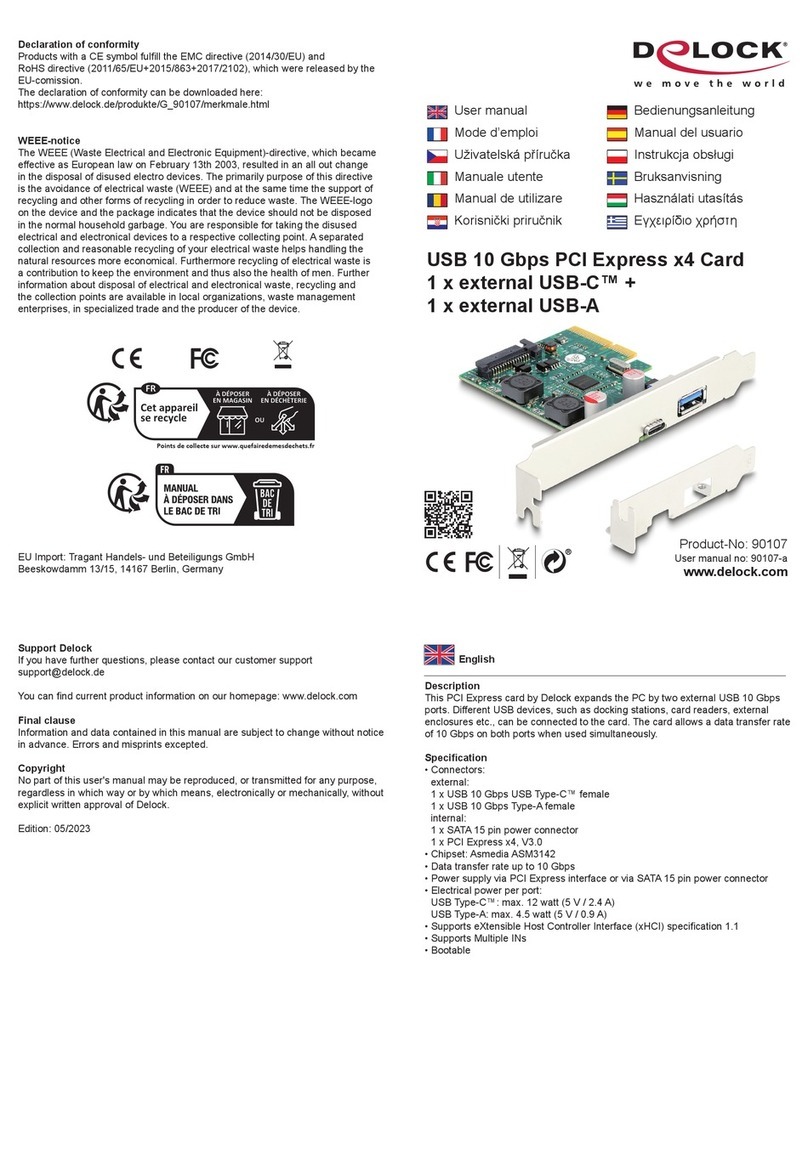
DeLOCK
DeLOCK 90107 user manual
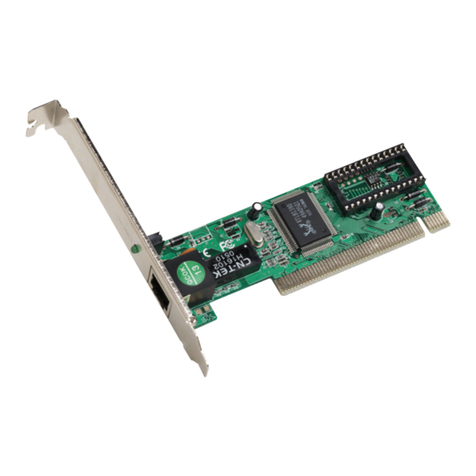
SMC Networks
SMC Networks EZ CARD SMC1255TX-1 Quick installation guide
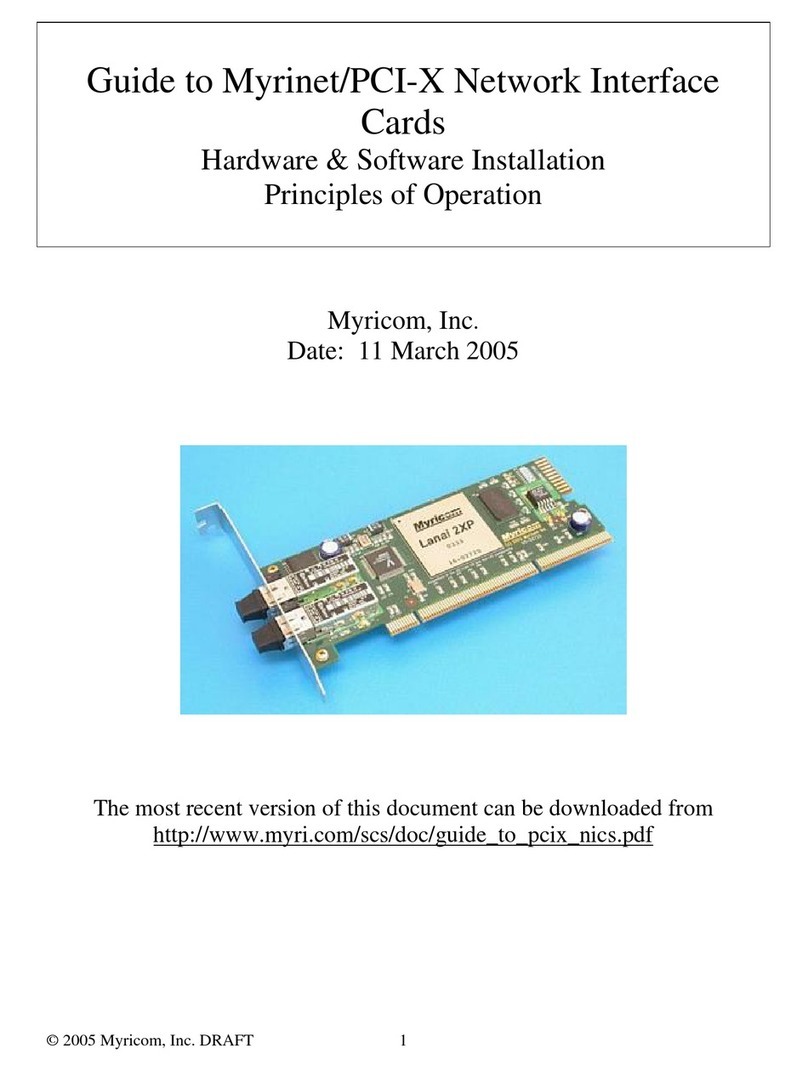
Myricom
Myricom Myrinet/PCI-X Network Interface Cards Hardware & software installation
